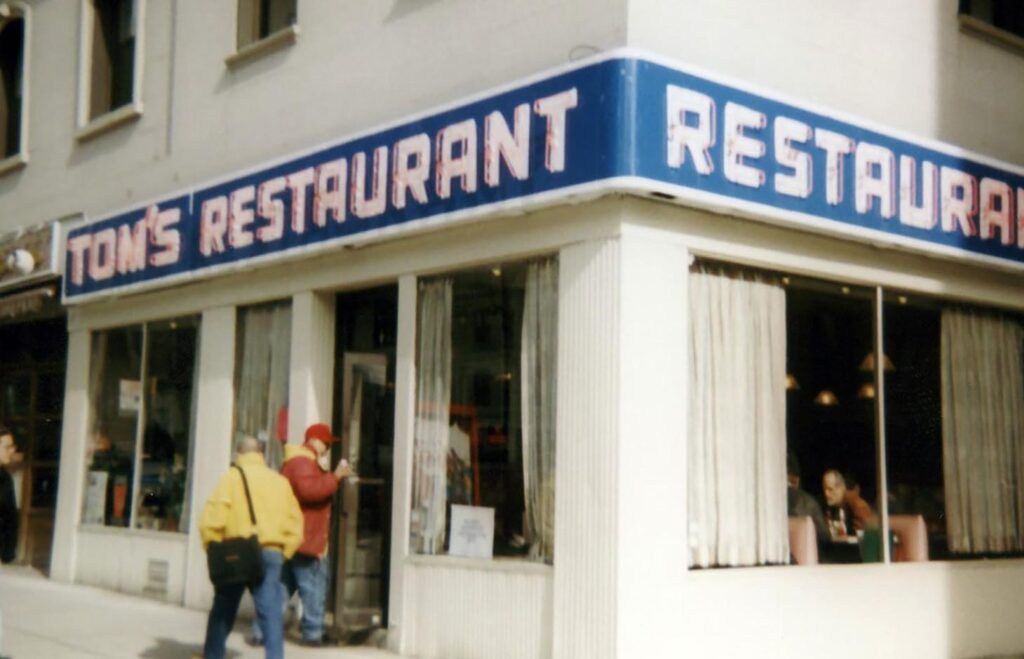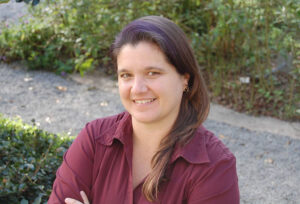The hit 90s show Seinfeld was known for its kooky, lovable cast and ability to draw comedy out of everyday situations. The show ended in 1998, a year before Salesforce’s founding. This realization got us thinking: What would the characters have thought of the eventual appearance and growth of the Software as a Service (SaaS) industry?
With careers ranging from editor to postal worker, we decided to try a little thought experiment. How would the colorful characters of Seinfeld fit into the SaaS business world?
Would they have waited for inspiration to strike before putting together a business plan? Or would they dive in head first, throwing ideas against the wall to see what stuck? Would they have competed against one another, or become a team?
While we can’t be absolutely sure, here are some of our best guesses:
Cosmo Kramer: Seinfeld’s subscription pioneer
It’s unsurprising that quirky Kramer would be the first of the Seinfeld friends to dive into the subscription field. With his penchant for schemes and out-of-the-box thinking, there was plenty of potential for him to hit on a great idea. It certainly didn’t hurt that he was always thinking of ways to help people.
When he first caught wind of the rising success of subscription businesses, Kramer decided to try recycling an old idea he knew had promise. The result? The rebirth of the roll-out Tie Dispenser, in a new and improved subscription!
Kramer moved his Tie Dispenser into men’s restrooms in bars, restaurants, coffee shops, and convention centers. They were much like women’s sanitary product dispensers, but modernized. With the swipe of a credit card, a stained-tie-wearing patron would be signed up for a $10-a-month subscription, enabling them to acquire a fresh black tie in a nearby bathroom whenever they needed.
There was some trouble getting off the ground at first: customers who didn’t understand the subscription model often fought charges the second month. Kramer’s attempt to provide customer service was predictably unproductive, given his unique communication style, and he lost many subscribers early on.
In the end, Kramer was outdone by his worst enemy: himself. After rushing to meet multiple customer demands for more tie style and color options, higher quality fabric, and one-time purchasing, Kramer burned out. In a culminating argument with a major convention center partner, he announced he was shutting the operation down.
George Costanza: A suitor ahead of his time
George was a neurotic, often dishonest man with a questionable upbringing by bickering parents. His brief moments of confidence tended to lean into overconfidence, as if to counterbalance his usual complete lack thereof. Despite George’s self-doubt, however, he was at least a man who knew he was worthy of love and affection.
George learned an unexpected lesson during one of his many convoluted dating schemes. While posing as a tourist in NYC to win the affection of a Visitor’s Bureau employee, he realized that sometimes, proximity could overcome other roadblocks in romance. Emboldened by this knowledge, and with a desire to tap into his passion for, well, passion, he set forth to help fellow romantics find love in his area.
It may have been a little selfishly motivated.
George wanted to leverage the addition of cameras to cell phones in 2002. He got to work developing a mobile-accessible, pay-per-week site called Click2Pick, a program that provided fellow romance seekers in the city with pictures and basic profiles of available singles in their area.
The program was simple. When a prospective date’s profile appeared, click “1” on your cell phone’s keypad for “no”, or “3” for “yes”, and if the good feelings were mutual, messaging could commence!
Initially, thanks to George’s attention to detail, Click2Pick was a success. One New York Times article even went as far as to call him the “Jeff Bezos of the City.” Sadly, though, George’s stickler ways made it tough to be flexible as the business’s needs changed. As keypads on phones disappeared and apps replaced mobile browsing, Click2Pick got swiped left, and left behind.
Newman: Bringing the “service” back to the postal service
Newman was disappointed to be left out of Kramer’s Tie Dispenser venture, but was also unsurprised when it failed. He knew he could do better.
“I deliver subscriptions all the time…well, most of the time!” Newman proclaimed as he announced his latest inspiration. What was it? An online subscription service for tracking USPS packages. While other private delivery businesses already provided the service for free, Newman predicted it would be years before the postal service caught up to the technology.
As it was, he was tired of the guys at the post office telling him about calls from people wondering where their packages (the ones he was supposed to be delivering) were. There was so much mail to deliver, and so little time!
To cut down the calls, he’d put up a website, charge a fee, and find a way to get the information on package whereabouts from USPS’s internal system onto the website. He’d also create a form on the site to unsubscribe from junk mail, pushing the information to USPS’s system to reduce his workload and the number of complaints he had to hear about mailboxes full of junk. After all, junk mail takes just as much energy to deliver as everything else!
It was a Zuckerberg-esque approach that easily fit with Newman’s passion for information: mine existing data, and share it with the masses, regardless of privacy issues.
Needless to say, the federal government didn’t take too kindly to Newman’s efforts. In a footrace that surprised many onlookers, Newman dodged capture right up until the K-9 unit was brought in. Today, everyone can happily track their posted packages for free.
Elaine Baines: Putting a new lock on the vault
Elaine was a bit of a firecracker, and while she might have taken joy in calling out her friends’ imperfections, it was clear that she cared about them. While prone to angry outbursts, she’d never hurt anyone in her circle.
At least not intentionally.
Before Sue Ellen’s wedding in Season 9, Jerry shared a secret with Elaine that needed to be kept.
“All right, all right, I’ll put that in the vault,” she promised.
“No good; too many people know the combination,” Jerry replied.
“What combination?”
Those peach schnapps got Elaine every time. After a few drinks at Monk’s, she spilled the beans to George that Jerry slept with Nina, which led to an outburst later during Sue Ellen’s wedding in India.
Ruining a wedding never quite sat well with her, and as she watched the rise and fall of George’s mobile dating site, she got an idea.
Too many of her friends, including herself, were using their cell phones while drinking to disastrous effect. Secret-spilling, love-confessing, and regrettable matching on dating apps had become the norm. Sunday brunches were becoming a time to gather together, delete text message threads, and painfully share the events of the night before with friends.
Not anymore. With Elaine’s SchnappLock app, simply activating the app before heading out for a night of drinking would keep a user from performing anything other than emergency phone calls and checking non-communication-enabled apps.
Initially, development of the app was slow, as Elaine obsessed over the user interface and making it look “perfect.” Over time, however, SchnappLock evolved into a successful business, and Elaine’s networking skills resulted in a team of developers with the highest number of female employees globally at a SaaS company.
Jerry Seinfeld: Finding success in balance
Somehow, Jerry always managed to be the calm eye of the storm his friends created around him. While the occasional girlfriend would spice things up, he typically lived a life that “evened out”: for every bad event, there was a good one to balance it.
After the unfortunate experience with the puffy shirt, however, Jerry couldn’t help but feel just a little bit “uneven.” Surprising as it was, he was filled with a sense of guilt.
Years after the incident, racks in New York thrift stores were still packed with the pirate garb, and Jerry knew that he was at least partly to blame. He finally decided to rid himself of his guilt by hiring an app developer to put together a solution connecting thrift shoppers with stores in their area, and then created an advertisement campaign…
…wearing the puffy shirt.
Fortunately, unlike many of Kramer and Newman’s schemes, this one actually worked—even better than Jerry had planned. The puffy pirate shirts flew off the racks, and became a shining moment in local fashion history. Kramer’s low-talking ex-girlfriend Leslie even wound up getting back into business, meeting the growing demand for the shirt she knew was destined to be a hit years ago.
The app, GarbGrab, continued to succeed even after the last puffy shirt was sold, eventually turning into a men’s thrift fashion subscription service known for out-loud style that got noticed.
Having re-acquired the balance he was accustomed to, Jerry sold the app and began planning his retirement.
When life imitates art
While the characters in Seinfeld were fictional, the success of the show was at least somewhat based on how real the characters and their experiences felt. What was also real about them, of course, were their quirks and fallibilities.
If there’s anything we can learn from the hypothetical SaaS-cast of Seinfeld, it’s that every individual brings their own unique style to business.
Have your own take on some Seinfeld-and-friends-entrepreneurial ideas? Include them in the comments below.








